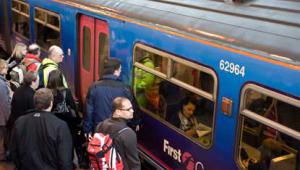Transport secretary Chris Grayling was stuck between a rock and a very hard place over Virgin-Stagecoach East Coast. He could allow the company to renegotiate the franchise and let them off premium payments of £2bn, or he could renationalise the service, albeit temporarily.
It was a choice of infuriating the public by granting a new deal to Virgin-Stagecoach or giving a huge box of ammunition to the Labour party, which wants the railways renationalised. For a man who is so ideologically driven that he privatised the probation service, choosing the latter must have hurt – but it was without doubt the lesser of two evils, especially given the uproar over Carillion.
In reality, he had no choice because giving the East Coast franchisee a generous deal would have quickly encouraged other troubled franchisees to knock on his door. The East Coast will now get its fifth operator in less than a decade.
Grayling stressed this was a key moment in the history of rail franchising and he was spot on. The two decades long system of franchising to private companies that take on the revenue risk in return for contracts averaging around seven years is bust. The reason is simple. For nearly all that period, passenger numbers were growing steadily, allowing the Department for Transport to let out contracts which, over time, were on favourable terms as subsidy paid to the company declined or premium payments rose.
However, for the past 18 months, passenger numbers have stagnated or declined, so signing new contracts now might leave companies exposed to considerable losses. Already several franchises with deals signed relatively recently, such as South Western Trains, Greater Anglia and Northern, are predicted to get into trouble because passenger numbers have not met expectations.
Officials are therefore looking at other systems. Mass renationalisation is not politically acceptable so a likely model is management contracts. Under these, the government takes the revenue risk and the company gets a small percentage, typically 3% of the overall income on top of its fixed costs, as a profit margin. It is a less exciting business and removes some incentives from franchisees to increase passengers but may attract more players.
Bringing in a wider range of bidders is a priority for any sort of contracting model to survive. With National Express having left the scene, FirstGroup at the mercy of a potential hostile takeover and Virgin and Stagecoach in the doghouse, few players are left apart from state-owned foreign railway companies such as SNCF, Trenitalia and the Nederlandse Spoorwegen. The paucity of British-based franchisees is subject to criticism and any attempt to develop a new model will need a greater range of bidders.
In the longer term, Grayling is trying to push for a more thorough reform. He would like a new type of risk-sharing relationship between Network Rail and train operators, and there has already been some devolution of power to the Network Rail routes as prelude to a possible break-up. His idea is that integrated franchises would emerge, with the same company running both infrastructure and the operations, possibly with local stakeholders such as groups of councils and LEPs having a role in letting franchises and maybe helping to fund them.
The difficulty is how to forge partnerships between lightly capitalised and privately owned train operators with heavily capitalised and publicly owned Network Rail. With Network Rail being widely criticised for overspending on projects such as the Great Western electrification and train operators in trouble financially, the only certainty in the rail industry is that it is facing a rocky future.




















